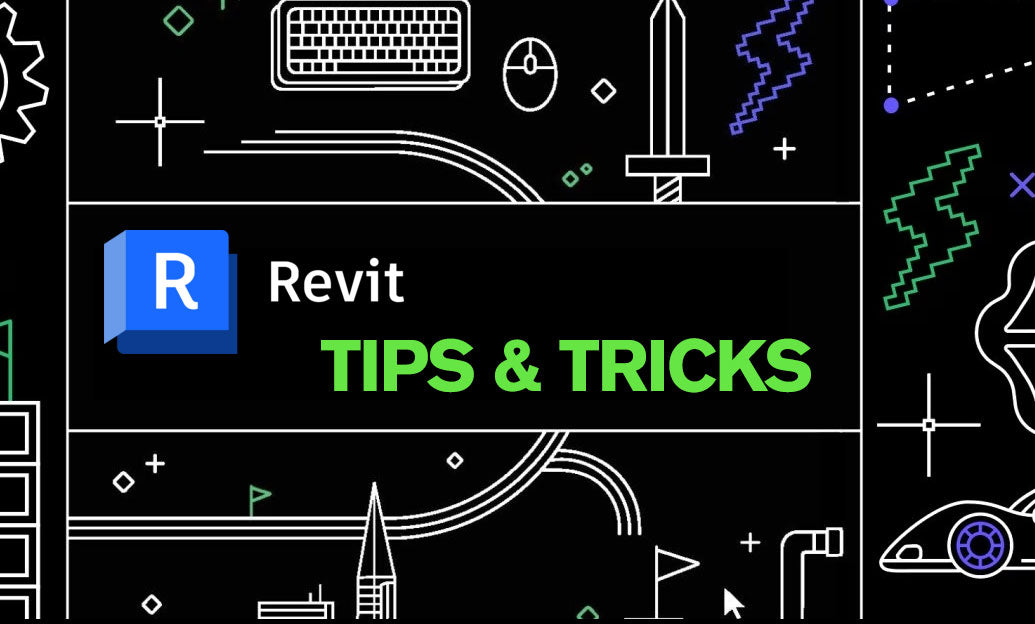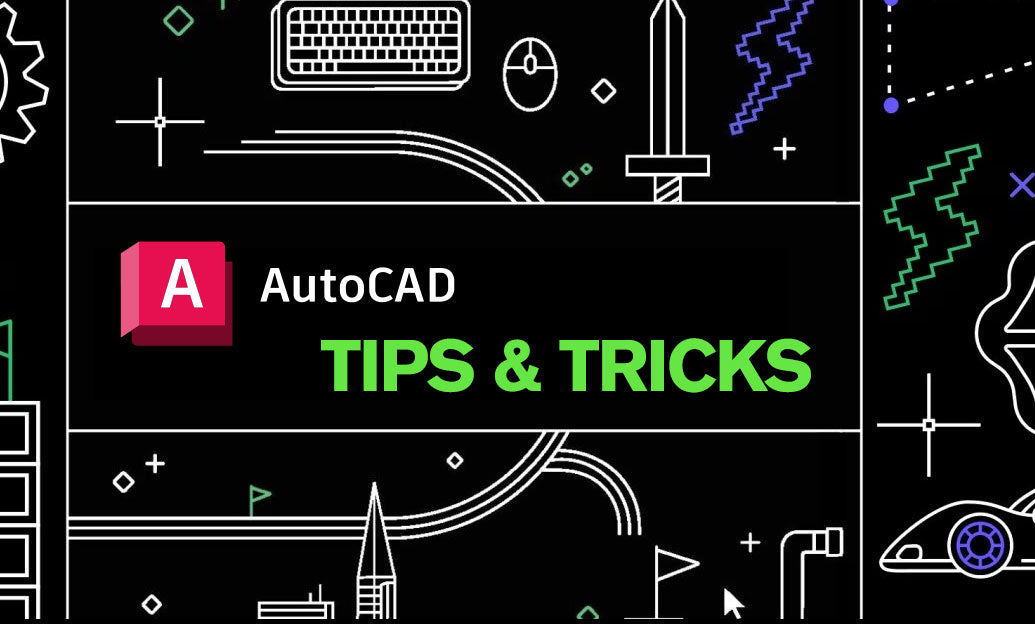Your Cart is Empty
Customer Testimonials
-
"Great customer service. The folks at Novedge were super helpful in navigating a somewhat complicated order including software upgrades and serial numbers in various stages of inactivity. They were friendly and helpful throughout the process.."
Ruben Ruckmark
"Quick & very helpful. We have been using Novedge for years and are very happy with their quick service when we need to make a purchase and excellent support resolving any issues."
Will Woodson
"Scott is the best. He reminds me about subscriptions dates, guides me in the correct direction for updates. He always responds promptly to me. He is literally the reason I continue to work with Novedge and will do so in the future."
Edward Mchugh
"Calvin Lok is “the man”. After my purchase of Sketchup 2021, he called me and provided step-by-step instructions to ease me through difficulties I was having with the setup of my new software."
Mike Borzage
Design Software History: The Evolution of User Testing in Design Software: From Early CAD Systems to Modern Usability Methodologies
February 13, 2025 6 min read


Introduction to User Testing in Design Software
User testing, a fundamental component of software development, involves evaluating a product by testing it with representative users. In the context of design software, user testing is paramount for ensuring that the tools and features cater effectively to the needs of designers, engineers, and architects. By observing how users interact with software, developers can gain invaluable insights into usability, functionality, and overall user experience. The importance of user-centric design cannot be overstated, as it places the end-user at the heart of the development process, driving innovation and refinement of software products. In the early days, user testing in design software was a nascent concept, but over the years, it has evolved significantly. The progression from rudimentary testing methods to sophisticated user experience strategies highlights the industry's commitment to enhancing usability. This evolution mirrors the advancements in technology and computing power, enabling more comprehensive and effective user testing methodologies. Understanding this history is crucial for appreciating how user testing has shaped modern design software and continues to influence future developments.Early Beginnings of User Testing in Design Software
The initial phases of user testing in design software can be traced back to the advent of early Computer-Aided Design (CAD) systems in the 1960s and 1970s. Pioneers like Ivan Sutherland, who developed the revolutionary Sketchpad, laid the groundwork for interactive computer graphics and user interfaces. Sketchpad was one of the first programs to utilize a graphical user interface, allowing users to interact with the computer through a light pen to draw and manipulate graphical objects. However, the concept of systematically testing how users interacted with such software was still in its infancy. During the 1970s and 1980s, as CAD systems began to gain traction, user feedback was primarily gathered informally. Designers and engineers who used the software would provide anecdotal insights to developers, but there was a lack of structured methodologies for collecting and analyzing user data. Companies like IBM and Autodesk, recognizing the potential of user input, began to pioneer early user testing methodologies. They started to conduct basic usability sessions, observing how users navigated through their software and identifying obvious pain points. Nevertheless, these efforts were limited by technological constraints and a lack of established frameworks for user testing. The limitations faced during this period included minimal computing power, which restricted the complexity of software features and the ability to simulate user environments effectively. Moreover, the user interfaces were primarily command-line based, which posed significant usability challenges. The absence of graphical interfaces made it difficult for users to interact intuitively with the software, underscoring the need for enhanced user testing to improve usability. Despite these challenges, the groundwork laid during this era was crucial for the future development of user testing practices in design software.Technological Advancements and Their Impact on User Testing
As technological advancements accelerated in the late 20th century, the landscape of design software underwent significant transformation. The transition from command-line interfaces to graphical user interfaces (GUIs) marked a pivotal shift that had profound implications for user testing. GUIs made software more accessible and intuitive, but also increased the complexity of user interactions, necessitating more sophisticated user testing methodologies. Developers needed to understand not just if a feature worked, but how users perceived and interacted with it. The adoption of software development frameworks like Agile and User-Centered Design (UCD) played a critical role in shaping user testing strategies. **Agile methodologies emphasized iterative development**, where software is developed in small increments with continuous feedback. This approach naturally integrated user testing into each phase of development. User-Centered Design further reinforced the importance of involving users throughout the development process to ensure that the final product meets their needs and preferences. Specific CAD systems began to effectively incorporate user feedback loops into their development cycles. For instance, SolidWorks, introduced in the mid-1990s, leveraged user input extensively to refine its 3D modeling capabilities. Similarly, Pro/ENGINEER (now Creo), developed by PTC, utilized user testing to enhance its parametric modeling features. These companies conducted usability studies, collected user feedback through surveys and beta testing programs, and made iterative improvements based on the data collected. This approach led to more user-friendly software that catered closely to the needs of professionals in engineering and design fields. Technological advancements also enabled the use of more sophisticated tools for user testing. Enhanced computing power allowed for simulations and prototypes that closely mimicked the final product, providing users with a more accurate experience during testing phases. Additionally, the rise of the internet and networking technologies facilitated remote user testing, expanding the reach to a broader user base. Developers could now gather feedback from users across different regions and industries, enriching the data and insights gained from testing.User Testing in the Age of Modern Design Software
In the contemporary landscape, user testing in design software development has become more advanced and integral than ever before. Modern techniques and tools have been developed to ensure that software not only meets functional requirements but also provides an exceptional user experience. **Usability testing**, **A/B testing**, and **remote user testing** are now standard methodologies employed by developers to gather in-depth insights into user behavior and preferences. Usability testing involves observing users as they interact with the software to identify usability issues and areas for improvement. This method provides qualitative data on how users perform tasks and what obstacles they encounter. A/B testing, on the other hand, allows developers to compare two versions of a feature to determine which one performs better in terms of user engagement and satisfaction. Remote user testing has expanded the scope of user testing, enabling developers to collect feedback from a diverse group of users without geographical constraints. Modern design software companies have embraced these techniques to prioritize user testing in their development processes. For example, SketchUp, known for its intuitive 3D modeling capabilities, regularly conducts user testing sessions to refine its tools and interface. By integrating user feedback in **iterative design processes**, SketchUp has been able to enhance software functionality continually. Similarly, Rhino3D, a renowned software for free-form non-uniform rational basis spline (NURBS) modeling, incorporates extensive user testing to improve its advanced modeling features and ensure they meet the complex needs of designers and architects. Developers now utilize advanced analytics and feedback mechanisms within the software itself. In-app feedback tools and usage analytics provide real-time data on how users interact with different features. This data-driven approach allows for rapid identification of issues and opportunities for enhancement. Moreover, the adoption of cloud-based platforms has facilitated collaborative user testing, where multiple users can interact and provide feedback simultaneously, enriching the data collected. Bulleted lists have become a valuable tool in presenting user testing findings and recommendations, offering clear and concise points for developers to address. For instance, user testing reports might include: - Key usability issues identified during testing sessions. - User preferences for specific interface designs or features. - Suggestions for new features based on user needs. By systematically analyzing this feedback, developers can make informed decisions that align with user expectations and industry trends.Conclusion
The evolution of user testing in the design software landscape reflects a journey from humble beginnings to sophisticated, user-centric methodologies. Initially, user testing was limited by technological constraints and a lack of formalized processes. However, as computing power increased and development frameworks evolved, user testing became an integral part of the software development lifecycle. The transition from command-line interfaces to graphical user interfaces necessitated more detailed and frequent user testing to ensure usability and functionality. Today, continual user feedback is central to driving software innovation and improving user satisfaction. Modern techniques like usability testing, A/B testing, and remote testing have enabled developers to gather comprehensive insights into user behavior and preferences. The integration of user feedback in iterative design processes ensures that design software remains aligned with the evolving needs of professionals in the field. Looking forward, future trends in user testing for design software are poised to leverage emerging technologies such as artificial intelligence (AI), virtual reality (VR), and machine learning. AI can be used to analyze user behavior patterns more efficiently, providing deeper insights into usability issues. VR offers immersive environments for testing, allowing users to interact with software in more natural and intuitive ways. Machine learning algorithms can personalize user experiences based on individual usage patterns, further enhancing satisfaction. In conclusion, the continued emphasis on user testing will be essential for the development of innovative and effective design software. By embracing new technologies and methodologies, developers can ensure that their products not only meet but exceed user expectations, driving progress in the industry and setting new standards for usability and functionality.Also in Design News

ZBrush Tip: Techniques for Creating Realistic Eyes and Eyelids in ZBrush
February 13, 2025 2 min read
Read More
Revit Tip: Optimizing Project Management with Revit Phasing Tools
February 13, 2025 2 min read
Read More
AutoCAD Tip: Optimizing 3D Modeling Efficiency with AutoCAD's Move and Rotate Tools
February 13, 2025 2 min read
Read MoreSubscribe
Sign up to get the latest on sales, new releases and more …


